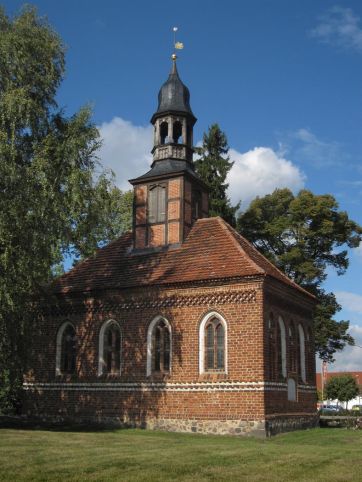The Tale of the Lindwurms: Difference between revisions
Created page with "{{Sidebar|Neubrandenburg Georgskapelle.jpg|St. Georg Chapel at Neubrandenburg.|The Tale of the Lindwurms|12|Mecklenburg-Vorpommern|{{Coordinates|53.5786,13.1152}}</br>{{Coordinates|53.557598,13.247204}}</br>{{Coordinates|53.5580300, 13.1619779}}}} Close to the former country road between Neubrandenburg and Stavenhagen, there are three hills near the field marches of Gevezin and Blankenhof: The Blocksberg, the Jabsberg, and the Lindberg. A long time ago, lindwurms used t..." |
mNo edit summary |
||
| Line 1: | Line 1: | ||
{{Sidebar|Neubrandenburg Georgskapelle.jpg|St. Georg Chapel at Neubrandenburg.|The Tale of the Lindwurms| | {{Sidebar|Neubrandenburg Georgskapelle.jpg|St. Georg Chapel at Neubrandenburg.|The Tale of the Lindwurms|11|Mecklenburg-Vorpommern|{{Coordinates|53.5786,13.1152}}</br>{{Coordinates|53.557598,13.247204}}</br>{{Coordinates|53.5580300, 13.1619779}}}} | ||
Close to the former country road between Neubrandenburg and Stavenhagen, there are three hills near the field marches of Gevezin and Blankenhof: The Blocksberg, the Jabsberg, and the Lindberg. A long time ago, lindwurms used to live there. When they were lying stretched-out on the ground, they resembled a cut-down fir tree. | Close to the former country road between Neubrandenburg and Stavenhagen, there are three hills near the field marches of Gevezin and Blankenhof: The Blocksberg, the Jabsberg, and the Lindberg. A long time ago, lindwurms used to live there. When they were lying stretched-out on the ground, they resembled a cut-down fir tree. | ||
Latest revision as of 15:40, 26 September 2025

|
| Geographic Coordinates: 53° 34' 42.96" N, 13° 6' 54.72" E 53° 33' 27.35" N, 13° 14' 49.93" E 53° 33' 28.91" N, 13° 9' 43.12" E |
Close to the former country road between Neubrandenburg and Stavenhagen, there are three hills near the field marches of Gevezin and Blankenhof: The Blocksberg, the Jabsberg, and the Lindberg. A long time ago, lindwurms used to live there. When they were lying stretched-out on the ground, they resembled a cut-down fir tree.
Once, a cart traveled along the road close to the Brandmühle mill and encountered a young lindwurm that was lying asleep in the sun right across the road. Thinking that it was a fir branch, the driver drove over it, only realizing what it was when he heard the cry of the crushed beast. After hearing the wail, the old lindwurm rushed to the site and found the younger one dead. Enraged, the lindwurm pounced upon a wagon filled with straw that was traveling to Neubrandenburg. The farmhand driving the wagon noticed this and raced ahead at full speed. Fortunately, when he went past the Neuendorf Preserve, he lost the connecting pin to his trailer, which left the trailer behind and allowed the farmhand to speed ahead with his cart that much faster. At first, the lindwurm dug through the straw, but, since it didn’t find anything, it raced after the farmhand. In order to travel faster, it bit into its own tail and rolled after the wagon like a hoop. The farmhand was barely able to reach the Brandenburg Gate, which was quickly closed behind him.
The lindwurm rested before the gate in the place where the Church of St. Jürgen is now located, and no citizen dared go outside. As it happened, a foreign prince named Georg was in the city who chose to face the lindwurm. In a fierce battle, he managed to cut off the tail of the lindwurm, in which its strength was contained. This soon allowed him to kill the beast for good. To commemorate this event, the Church of St. Jürgen was built, and the incident is depicted on its altar.
Source: Bartsch - Sagen, Märchen und Gebräuche aus Meklenburg Band 1, p. 39f
 Sunken Castles, Evil Poodles: Commentaries on German folklore. Get the book for further context and explanatory commentary! |